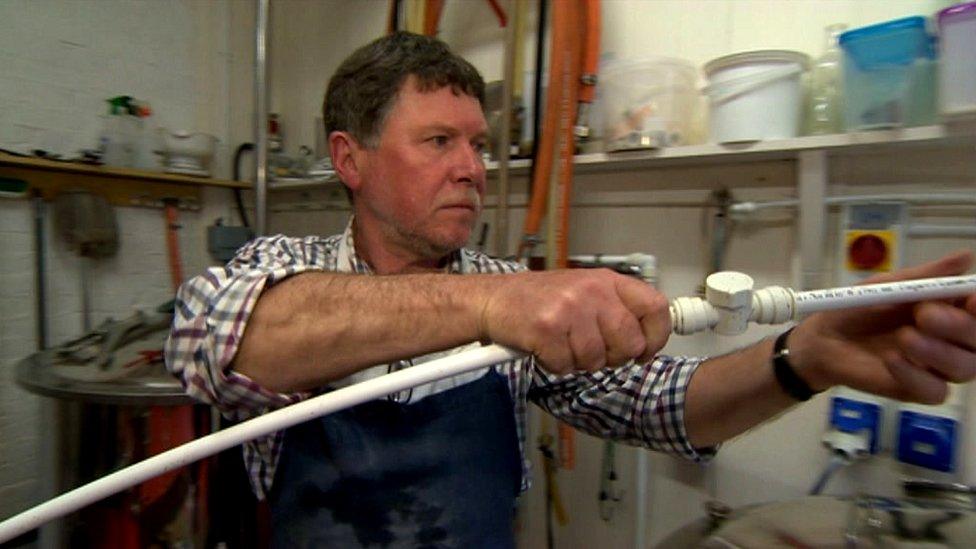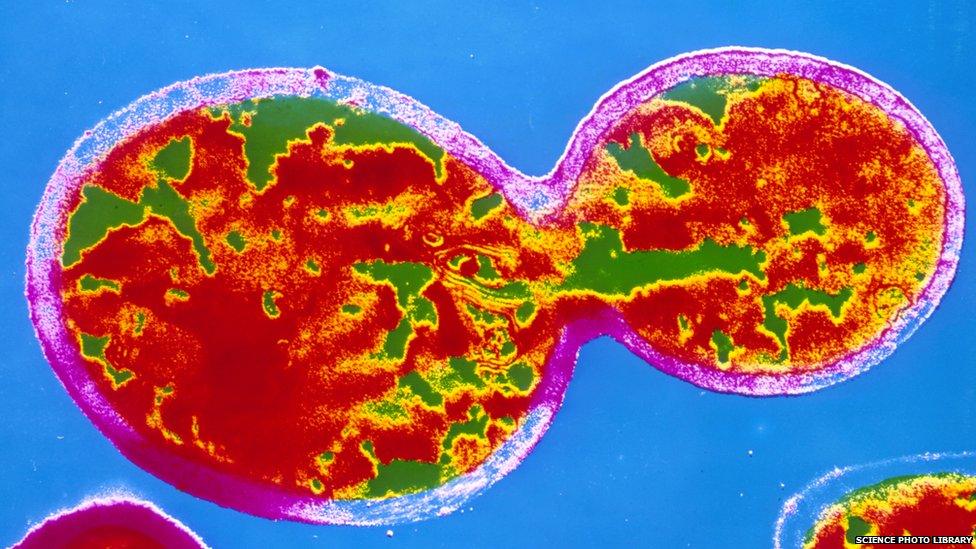Old yeasts used by brewers to unearth the beers of yesteryear
- Published
The National Collection of Yeast Cultures holds strains from around the world
The treasure chest of the nation's brewing industry sits on an unassuming office complex on the outskirts of Norwich. It houses thousands of different types of yeast. Some, unused for generations, are now being given a new lease of life to offer a taste of times past.
Back in the 1920s a handful of beer-makers shared a fear: what would happen if we lost our brewing yeast?
They not only agreed such an occurrence would be very bad news, they also agreed on a solution - to deposit a sample of their all important yeast in a shared collection for safety.
Today that collection - the National Collection of Yeast Cultures (NCYC) - is home to 4,000 different yeasts.

Experts say each strain of yeast gives beer a different flavour. While most brewers stick with what they know, some are starting to use yeasts unused for more than 50 years
They include all types of yeasts, including brewing, baking and industrial yeasts, from across the globe. Even yeasts found at the north and south poles have been collected and added to the collection.
"We are the Kew Gardens of the yeast world," says Dr Ian Roberts, curator at the NCYC.
"Yeasts are literally everywhere and are very important not just in brewing and baking but in areas like cancer research because yeasts are a model organism for research."
Using different yeasts can change the taste of a beer dramatically, says Dr Roberts.
"Brewers tend to play it safe and they like to keep the yeasts they like to use," he says.
But when a brewery's production yeast is destroyed - as happened in 2009 to a flooded brewery in the Lake District - the NCYC was able to get the operation "back up and running" with the very same yeast strain.
Some brewers, however, are willing to take the plunge and explore the myriad taste-scape offered by yeast. One is micro-brewer Martin Warren, who owns the Poppyland Brewery in Cromer.

Mr Warren during the brewing phase with the yeast supplied from the NCYC
"I'm too small to compete head to head with the regional brewers and I don't brew beer that you would buy in pubs," says Mr Warren, a former museum curator.
"I am looking to have adventures with beer, I'm really just a grown-up home brewer who now has a full-scale brewery.
"It means that I can make the beers that other brewers dare not do, or cannot do."
One of his latest beers is made using a yeast strain originally from Norwich unused since 1958.
Presented with his yeast by the NCYC's Steve James, Mr Warren said: "That must be the smell of beers from the 1950s.
"It is fruity, it is delicious. It is going to be great to brew with this. As my wife says if you put ingredients in, how can it go wrong?"
The end result is a beer called Hawkey Frolic, which was debuted - and feted as "really lovely" and "really malty" - at the Norwich Beer Festival.

The curious world of yeast

Yeast cells dividing
Yeast are single-celled fungi
Used by humans for thousands of years, including the ancient Egyptians
The carbon dioxide produced by yeast makes bread dough rise, and the ethanol it produces makes beer and wine alcoholic
Last year scientists created the first synthetic chromosome for yeast, a landmark in biological engineering

But where next for the nation's beer adventurers?
Brewers, says Dr Roberts, are most likely to explore further into the past to the yeasts of the 1930s and 1920s. They might also soon have access to new yeasts created as a result of the NCYC's project to sequence the genomes of all of its strains.
The idea, he says, was to find out the genetic basis for each yeast's special characteristics. This, in turn, could lead to new yeast strains with even better properties and flavours.
And the chances of seeing a north or south pole beer any time soon? Very low sadly, says Dr Roberts, because these yeasts are not brewing yeasts.
Inside Out will be broadcast on BBC One in the east of England at 19:30 BST on Monday and available on iPlayer afterwards.
- Published27 March 2014